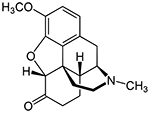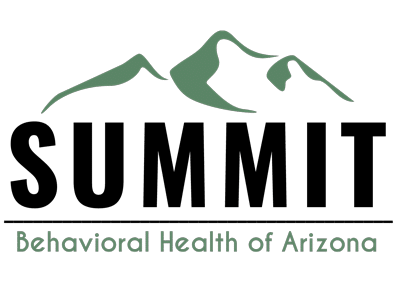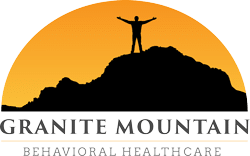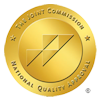
There is no other way to put it. The opioid crisis in America is HEARTBREAKING. But, we also know there is HOPE when it comes to opioid recovery and treatment.
What we get to witness at our treatment center on a regular basis is nothing short of a MIRACLE. We have the pleasure of guiding extremely courageous souls (who, to the outside world, may have seemed like hopeless cases) to a life free from opiate addiction.
Although opiates are considered one of the hardest addictions to break free of… our highly-qualified team of specialists has studied what works for those who make the effort to break free of opiates… and have created a treatment program based on the evidence that supports success.
Opioid Recovery… The Run Down
It’s very important to understand what EXACTLY an “addiction” is as defined by the American Society of Addiction Medicine:
“Addiction is a primary, chronic disease of brain reward, motivation, memory and related circuitry. Dysfunction in these circuits leads to characteristic biological, psychological, social and spiritual manifestations. This is reflected in an individual pathologically pursuing reward and/or relief by substance use and other behaviors.
Addiction is characterized by inability to consistently abstain, impairment in behavioral control, craving, diminished recognition of significant problems with one’s behaviors and interpersonal relationships, and a dysfunctional emotional response. Like other chronic diseases, addiction often involves cycles of relapse and remission. Without treatment or engagement in recovery activities, addiction is progressive and can result in disability or premature death.”— American Society of Addiction Medicine
Learn more about opioids & opiate addiction below… as well as how our addiction specialists support & treat opiate addiction sufferers who come to us for HELP.
Learn About Opiates
Opioids or Opiates? What’s the Difference?
At one point, there used to be a difference between opioids or opiates. Only synthetic drugs from the pharmacy with a prescription were considered opioids. Today, opioids now refer to the entire family from illegal to legal substances.
NIDA (National Insitute on Drug Abuse) uses the following description of opioids:

“Opioids are a class of drugs that include the illegal drug heroin, synthetic opioids such as fentanyl, or pain relievers available legally by prescription, such as oxycodone (OxyContin®), hydrocodone (Vicodin®), codeine, morphine, etc.
These chemically related drugs interact with opioid receptors on nerve cells within the body as well as the brain.
Opioid pain relievers are generally safe when taken for a short time as prescribed by a doctor, but because opioids produce euphoria in addition to pain relief it often leads to misuse (taken in a different way or in a larger quantity than prescribed, or taken without a doctor’s prescription).
Regular use—even as prescribed by a doctor—can lead to dependence. When misused, opioid pain relievers can lead to overdose incidents or death. An opioid overdose can be reversed with the drug naloxone when given right away.”
What is Opioid Misuse?
Someone who is suffering from opioid misuse may go against the doctor’s prescription. The individual may use more than the recommended dose. Or, the person may use the substance more frequently than recommended. Some may take medical drugs for a condition that isn’t truly justified. Many people who struggle with opioid misuse get their drugs from the streets.
What is An Opioid Use Disorder?
(Referenced from the Diagnostic and Statistical Manual of Mental Disorder-5)
- Strong desire to use opioids
- Inability to control or reduce the use
- Trouble meeting social or work obligations
- Having legal problems due to drug use
- Spending large amounts of time to obtain opiates
- Development of tolerance (meaning the need to use more significant amounts over time)
- Having withdrawal symptoms after stopping or reducing use (such as depressed mood, stomach upset, insomnia, muscle aches)
Signs of heroin or opioid misuse:
- Analgesia (feeling no pain)
- Sedation
- Euphoria (feeling high)
- Respiratory depression (shallow or slow breathing)
- Small pupils
- Nausea, vomiting
- Itching or flushed skin
- Constipation
- Slurred speech
- Confusion or poor judgment
Opiate Withdrawal and Timeline
Heroin or opioid withdrawal symptoms:
- Anxiety
- Irritability
- Craving for the drug
- Rapid breathing
- YawningO
- Runny nose
- Goosebumps
- Nasal stuffiness
- Hot flashes
- Muscle aches
- Vomiting
- Abdominal cramping
- Diarrhea
- Sweating
- Confusion
- Enlarged pupils
- Tremors
- Loss of appetite
Days 1-3
Most relapses will occur within the first 24 to 48 hours. This is due to an intolerance of the manifesting symptoms or the premonition of them arriving soon. This is what the character Mark Renton (Ewan McGregor) from Trainspotting refers to as “junkie limbo”. The first of these symptoms could include:
- Nausea
- Abdominal cramps
- Tearing
- Runny nose
- Sweats
- Chills
- Excessive yawning
- Muscle or bone aches
- Restless legs
Symptoms like aggression, headaches, or irritation can sometimes start as often as 12 hours after the last dose.
Day 3 – 5
Once past the first 3-5 days, you’re doing pretty good for yourself. You’ll start to notice a reduction in overall symptoms, but probably still feel it. Slow-acting opioid withdrawal symptoms will have reduced by now. However, with long-acting opioids, it’s possible to still be experiencing sweating, lack of appetite, trouble sleeping, or digestion issues. Back or leg pain will begin to diminish.
Day 6 – Beyond
By day six of opioid withdrawals, the most painful part of the symptoms should be over. Still, some might experience mild symptoms or difficulty with eating.
To assess the severity of symptoms clinicians typically use the Clinical Opiate Withdrawal Scale, COWS for short. Use our COWS scale below to test the severity of your withdrawal.
Post-Acute Withdrawal Syndrome
Post-acute withdrawals or PAWS come after the initial detox from opiates. When PAWS happens if it happens at all is unique for each person. Just expect these changes to come then go. But, they are typically easier to deal with as time goes on when in recovery. Maintaining your health with diet, exercise, or even socializing will all be beneficial towards getting through it. Some people don’t even experience PAWS at all or to such a small degree that it’s barely noticeable.
The most common post-acute withdrawal symptoms are:
- Mood swings
- Anxiety
- Irritability
- Tiredness
- Variable energy
- Low enthusiasm
- Variable concentration
- Disturbed sleep
Medications for Opiate Withdrawal
Suboxone (Buprenorphine/Naloxone)
Suboxone contains a combination of buprenorphine with naloxone. Buprenorphine is an opioid medication. Naloxone blocks the effects of opioid medication, including pain relief or feelings of well-being that can lead to opioid abuse.Subutex (buprenorphine)
Subutex is an opioid partial agonist-antagonist. It works by binding to receptors in the brain and nervous system to help prevent withdrawal symptoms. Someone who is no longer taking narcotics (eg, heroin, oxycodone) may use Subutex.Vivitrol (Naltrexone)
Vivitrol (naltrexone) blocks the effects of opioid medication. These include pain relief or feelings of well-being that can lead to opioid abuse. This medical drug is used as part of a treatment program for drug or alcohol dependence.Vivitrol injection is used to prevent relapse in people who became dependent on opioid medicine then stopped using it. Naltrexone can help keep cravings at bay.
The injection is also used to treat alcoholism by reducing your urge to drink alcohol. This may help with drinking less or to stop drinking altogether. Naltrexone will not decrease the effects of alcohol that was recently consumed.
Narcan (Naloxone)
Narcan Nasal Spray contains naloxone hydrochloride. Naloxone blocks or reverses the effects of opioid medication, including extreme drowsiness, slowed breathing, or loss of consciousness.Narcan Nasal Spray is used to treat an opioid overdose in an emergency situation. This medicine should not be used in place of emergency medical care for an overdose.
The Stigma Around Opiate Addiction
Stigma is a mark of disgrace that sets a person apart from others. When people are labeled by their illness, they’re no longer seen as an individual. Instead, they’re seen as part of a stereotyped group. Negative attitudes or beliefs toward a group create prejudice. This leads to adverse actions—even discrimination.
“The single most important barrier to overcome in the community is the stigma and associated discrimination towards persons suffering from mental and behavioral disorders.”
— The World Health Organization
Does It Matter?
By calling someone an addict, junkie, or drug abuser, it takes away from their identity as a human being.
Imagine for a second walking into a hospital to pass by someone receiving chemotherapy for cancer. Would you say to yourself, “that person is cancerous” then start to avoid them?
No! You’d probably start to feel some level of empathy for that person.
Well, people that use substances aren’t contagious. You’re not going to run into someone with a substance use diagnosis then find yourself locked up in a bathroom 10 minutes later trying to use.
When someone has a history of substance use, they automatically assume society has pushed them to the side. They often feel this way before there has even been any cause for that type of reasoning! They have to deal with the fact their use has gotten out of control. Unfortunately, they will also feel they have to deal with it alone.
In the end, it reinforces the stigma a person has about themselves. This, in turn, reinforces the stigma another person has of them.
Many people who are struggling with substance use keeping everyone at arm’s length. They struggle to connect as a society or as human beings.
Characteristics of Stigma:
- shame
- blame
- hopelessness
- distress
- secrecy
- loneliness, isolation or social exclusion
- stereotyping/derogatory labels
- misrepresentation in the media
- being treated differently than the rest of society
- discrimination in housing, employment or services
Better ways to phrase addiction-related terms:
Stigma Phrases
- Addict or Addicts
- Drug addicts
- Drug abuser
- Junkie
- Heroin or opioid dependency
- Clean, Dirty (when referring to drug test results)
Empowering Phrases
- Person
- Individual
- Human being
- Substance use
- Substance misuse
- Heroin addicted
- Person in Recovery
- Addiction
Living With Shame
Shame is having thoughts or feelings of “I am a bad person”. On the other hand, “I did a bad thing” is considered guilt.
Shame is focused on the entire being of a person, while guilt is focused on the behavior.
Guilt allows space for a person to realize they did something wrong, empowering them to make amends where needed.
When a person is experiencing shame they’re more prone to withdrawing from the situation feeling less a lack of empowerment.
Living with shame is very debilitating, and limiting to an individual.
Tools to Help Towards Opiate or Opioid Recovery
One of the most powerful tools is a tool you already possess: It’s you!
That may sound cliche, but let’s be real. A gust of wind isn’t going to blow by, leaving you suddenly unaffected by opioids and cravings. It’s going to take a much more powerful force to do that.
What we’re talking about is the power of vulnerability, popularized and founded by Brené Brown, a shame and vulnerability researcher at the University of Texas.
If you’re not quite ready for what Brené Brown discusses then try an exercise referenced from Kristin Neff’s book Self-Compassion that she wrote based on her research at the University of Texas.
How do you typically act towards yourself in difficult times? Use the Self-Compassion Scale designed by Kristin Neff to find out: (PDF)
Transforming Negativity
The next time you find yourself in the grip of negative emotions, try generating some positive emotions to go alongside them.
Use the following phrases when you’re stuck in negativity. They’re designed to validate your feelings while also focusing on your desire to be happy:
It’s hard to feel (fill in the blank) right now.
Feeling (blank) is part of the human experience.
What can I do to make myself happier at this moment?
The first phrase compassionately acknowledges the difficulty of having negative emotions.
The second phrase is a reminder that negative emotions are a normal, natural part of being human.
The third phase helps you get in touch with your desire to be happy.
How to Start Recovery Again After a Lapse or a Relapse
- Just get back to it.
- People slip up all the time whether it’s a diet, exercise, Netflix. You get the picture.
- If all you are able to do is muster one extra day of sobriety. Well, guess what? That’s progress!
- Try taking away at least one lesson from your lapse or relapse.
- Remember that there’s plenty of people out willing to help if you ask.
Learn or Do Something New
This may not seem like something worth trying when you’re struggling with heroin addiction. But it’s actually more powerful than you think.
When you learn or do something new, your brain creates new neuro-pathways or reinforces ones that don’t receive much stimulation.
When you’re out running and gunning, you’re repeating and reinforcing the same neuro-pathways that are associated with addictive actions.
With that in mind, give some other neurons in your brain a chance to live and breathe.
That’s how we start changing old behaviors—by teaching ourselves a new way of living!
Some ways you could start practicing new behaviors or changing the way you think are:
- Reading: Get curious about yourself and redefine how you perceive the world.
- Learn a new skill: Maybe this could lead up to a new career or favorite hobby.
- Travel to a distant country: Seeing other cultures and how they live could influence your perspective on how you choose to live.
- Start hanging out with more positive people.
- Get involved with the community.
Opioid Recovery And Treatment Services At Granite Mountain
You can receive treatment in our opioid recovery program for an opioid use disorder at Granite Mountain. Granite Mountain’s team includes skilled clinicians, therapists, and staff that come from a history of substance use. Some of the opioid abuse treatments we offer include:
- Stabilization Treatment Programs
- Structured Sober Living Homes
- Transitional Living Programs
- Intensive Outpatient Treatment Programs
- Therapy Programs for Recovery (group/individual)
- Dual Diagnosis Programs (Co-Occurring Conditions)
- Life Skills & Coping Mechanisms Development
Often, when someone is using opioids, all other responsibilities get pushed aside.
An individual will experience a loss of a job, educational goals, and relationships – often a cause of lingering guilt or shame.
At Granite Mountain, we help those who are struggling with opiate or opioid recovery. We help them with clearing their system of heroin. Also, we help them to develop coping mechanisms to overcome the strong desire to use again.
Overcoming heroin addiction IS possible when you have the right supportive treatment team behind you. Please feel free to contact us by calling (928) 756-0694.
References:
https://www.asahq.org/whensecondscount/pain-management/opioid-treatment/opioid-abuse/


